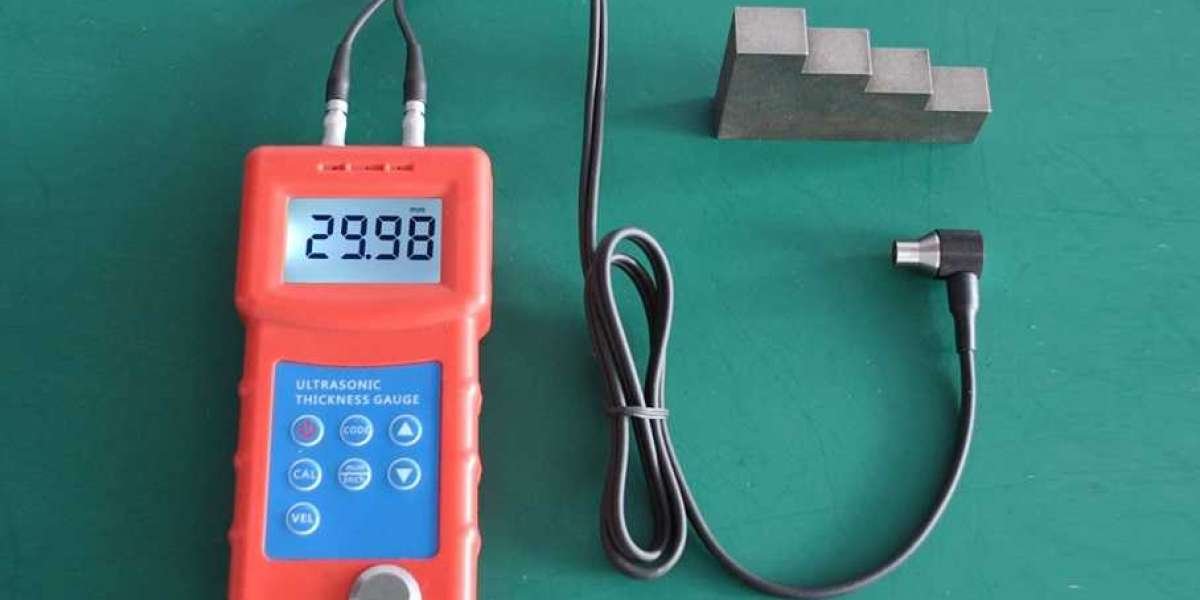Ultrasonic thickness measurement (UTM) is widely used in industries like construction, oil and gas, aerospace, and shipbuilding to assess material integrity. But just how accurate is it? The answer depends on various factors, including equipment quality, operator skill, and environmental conditions.
If you’re looking for a reliable utm ultrasonic thickness measurement solution, choosing the right device is key. Check out this UTM ultrasonic thickness measurement tool designed for precise and repeatable results. Now, let’s break down the factors that impact accuracy.
What Is Ultrasonic Thickness Measurement?
Ultrasonic thickness measurement is a non-destructive testing (NDT) method used to determine the thickness of materials like metals, plastics, and composites. It works by sending high-frequency sound waves through the material and measuring the time it takes for the waves to bounce back. The faster the return, the thinner the material.
This method is commonly used to detect corrosion, erosion, and wear in industrial structures, pipelines, storage tanks, and marine vessels.
How Accurate Is UTM?
When properly conducted, ultrasonic thickness measurement can achieve accuracy levels of ±0.01 mm (0.0004 inches). However, this precision depends on multiple factors, which we’ll explore below.
Key Factors That Influence UTM Accuracy
1. Equipment Quality
The accuracy of ultrasonic thickness measurement largely depends on the device being used. Higher-quality gauges with advanced signal processing and multiple measurement modes tend to provide more reliable results.
Key features that improve accuracy:
- Dual-element transducers for enhanced signal clarity
- Multiple echo mode to compensate for coatings
- Digital signal processing for clearer readings
2. Material Type and Condition
Different materials conduct sound waves at different speeds. The speed of sound in steel is different from that in aluminum or plastic, so the gauge must be calibrated accordingly.
Surface condition also plays a major role. Rust, dirt, or coatings can affect how sound waves travel, leading to incorrect measurements. Cleaning the surface or using specialized probes can improve accuracy.
3. Operator Skill and Training
Even the best equipment can produce inaccurate results if the operator isn’t trained properly. Holding the probe at the wrong angle, applying uneven pressure, or using the wrong couplant can all introduce errors.
Best practices for accurate readings:
- Ensure proper probe positioning
- Use the right couplant to eliminate air gaps
- Maintain consistent pressure during measurement
4. Couplant Selection and Application
A couplant is a gel or liquid applied between the probe and the material to help transmit sound waves. Without a couplant, there will be air gaps that disrupt the signal.
Using the right couplant for the material and environmental conditions is essential. Some couplants work better in high-temperature or underwater applications.
5. Surface Preparation
Dirty, rough, or coated surfaces can interfere with ultrasonic readings. In some cases, coatings can be ignored using advanced multiple echo modes, but heavy rust or pitting may still require cleaning.
If a surface is too rough, it may scatter the ultrasonic signal, leading to false readings. Sanding or grinding down the surface can improve measurement accuracy.
6. Thickness Range and Calibration
Ultrasonic gauges have a specific thickness range they can measure accurately. Using a gauge outside its recommended range can result in errors.
Regular calibration against known reference standards ensures the readings remain accurate. Some advanced gauges allow for automatic calibration adjustments.
7. Environmental Conditions
Temperature, humidity, and pressure can all impact ultrasonic thickness measurements. Extreme temperatures can alter the speed of sound through a material, requiring compensation.
For example, in cold environments, sound waves travel slower, potentially making the material appear thicker than it is. In high-heat applications, materials expand, slightly affecting readings.
8. Multiple Echo vs. Single Echo Measurements
Some ultrasonic gauges use single-echo measurements, while others use multiple echoes to provide more precise data.
- Single Echo: Measures the first returning signal, which may be affected by coatings.
- Multiple Echo: Ignores coatings and provides a more accurate base material measurement.
For applications where coatings are present, using a multiple-echo mode significantly improves accuracy.
How to Improve the Accuracy of Ultrasonic Thickness Measurement
1. Choose the Right Gauge for Your Application
Not all UTM gauges are the same. For best accuracy, select a gauge designed for your specific industry and material type.
2. Regular Calibration and Verification
Calibrating your device regularly ensures it remains accurate. Use calibration blocks with known thickness values to verify readings.
3. Prepare the Surface Properly
Clean and smooth out rough surfaces before taking measurements. If coatings are present, use a gauge with multiple echo capability.
4. Use the Correct Probe and Couplant
Different probes are designed for different materials and conditions. Ensure you’re using the right combination for your application.
5. Train Operators for Consistency
Proper training reduces human error and improves measurement consistency. Operators should follow best practices for probe handling and positioning.
6. Take Multiple Readings
To ensure accuracy, take several readings at different points on the material. Average the results to eliminate anomalies.
Common Applications Where Accuracy Matters Most
1. Pipeline and Tank Inspections
Accurate UTM is essential for detecting corrosion in pipelines and storage tanks. Even a small error in measurement could mean missing a critical weak spot.
2. Ship Hull and Offshore Structure Testing
Marine structures are constantly exposed to corrosion. Accurate measurements help prevent structural failures and ensure safety.
3. Aerospace and Automotive Components
Aircraft and vehicle parts require precise thickness measurements to maintain structural integrity and safety standards.
4. Power Plants and Pressure Vessels
Turbines, boilers, and pressure vessels operate under extreme conditions. Regular thickness testing ensures safe operation and compliance with regulations.
5. Manufacturing Quality Control
Manufacturers use UTM to ensure products meet design specifications and safety standards before shipping.
Final Thoughts: How Accurate Is UTM?
Ultrasonic thickness measurement is one of the most accurate non-destructive testing (NDT) methods available. When performed correctly, it provides highly precise thickness readings, helping industries maintain safety and compliance.
However, accuracy depends on equipment quality, operator skill, material condition, and environmental factors. By following best practices—like proper calibration, surface preparation, and using the right probe—you can ensure utm ultrasonic thickness measurement remains highly reliable.








